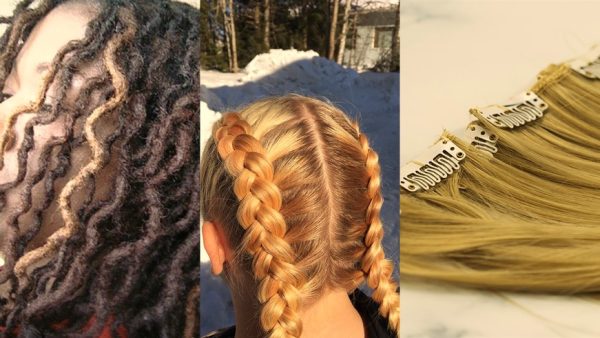
Traction Alopecia -Tight Hairstyles Can Cause Hair Loss
Traction alopecia (al-oh-pee-sha) is a medical term for the condition that is result of tight hairstyles that can cause hair loss. Traction alopecia occurs when hair is pulled tightly and consistently over time, leading to damage of hair and hair loss. This type of hair loss can be preventable by avoiding certain hairstyles and by following proper hair care practices.
Here are some tight hairstyles that can contribute to traction alopecia:
Hairstyles that constantly pull on your hair include:
•Buns, ponytails, and up-dos that are tightly pulled
•Cornrows and tight braids
•Dreadlocks
•Hair extensions or weaves
• Some have habit of wearing rollers to bed most time and this could lead to hair loss
What happens when you tie your hair in certain style?
- Tight Ponytails: Pulling the hair tightly back into a ponytail can put excessive tension on the hair follicles, leading to hair breakage and loss along the hairline and scalp.
- Braids and Cornrows: Braiding the hair tightly or creating tight cornrows can cause stress on the hair shafts and hair follicles, leading to hair loss along the braid lines.
- Tight Buns and Chignons: Wearing buns or chignons with hair wound tightly can lead to hair loss in the areas where the hair is tightly secured.
- Hair Extensions and Weaves: Adding hair extensions or weaves that are attached too tightly can cause traction alopecia, especially if they are not removed and repositioned regularly.
- Dreadlocks: According to a forehead procedures expert, forming and maintaining dreadlocks can sometimes involve tight twisting or pulling of the hair, leading to traction alopecia if not done gently.
How and when will you notice hair loss signs?
•Broken hairs, thinning of hair around forehead
•A receding hairline
• where your hair is pulled tightly you might notice patches of hair loss
- Stinging and crusts in the scalp
You will also notice, once where there was hair, there will be more scalp appearing. Traction alopecia would have already set in with hair stop growing.
To prevent traction alopecia and promote healthy hair growth, consider the following tips:
Remember: If your hairstyle is causing pain and feels uncomfortable, then you are damaging your hair.
- Avoid tight hairstyles that pull on the hair excessively, especially for long periods.
- Use hair clips rather than bands
- Opt for looser hairstyles that allow the hair to move more freely.
- Chose thicker braids and dreadlocks.
- Use hair accessories, such as soft scrunchies or fabric-covered hair ties, that put less pressure on the hair.
- Give your hair regular breaks from tight hairstyles to reduce tension on the hair follicles.
- If you use hair extensions or weaves, ensure they are applied and maintained by a professional to avoid excessive tension on the hair.
- Change your hairstyle – if you wear cornrows today, opt for lose hairstyle for next several days. This helps hair to recover.
If you notice signs of hair loss or thinning due to tight hairstyles, it’s essential to stop wearing the tight styles and give your hair time to recover. In some cases, the hair may regrow once the tension is relieved. However, if traction alopecia has caused significant damage to the hair follicles, hair regrowth may not be possible in those areas. If you’re concerned about hair loss, it’s best to consult a dermatologist or hair specialist for proper evaluation and advice.
Image credit:
Ykstyyppi123, CC BY-SA 4.0 <https://creativecommons.org/licenses/by-sa/4.0>, via Wikimedia Commons
Veroniqueakin, CC BY 3.0 <https://creativecommons.org/licenses/by/3.0>, via Wikimedia Commons
geehairimages, CC BY 2.0 <https://creativecommons.org/licenses/by/2.0>, via Wikimedia Commons
Author: Sumana Rao | Posted on: November 21, 2024
« Role Of Various Foods And Nutrition In Eye Health Sinus Infections -Symptoms And Treatment »






















Write a comment